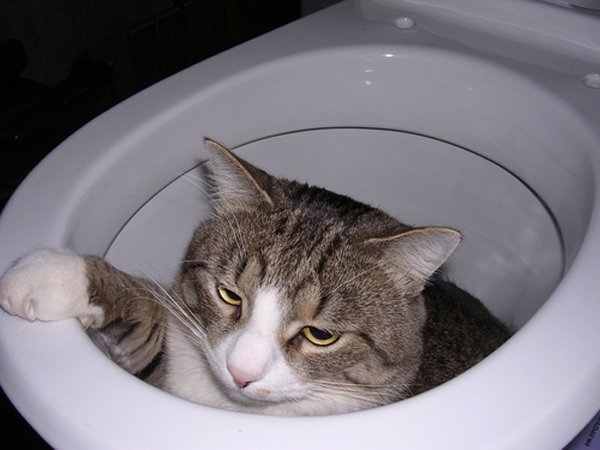The Dangers of Flushing Cat Poop Down Your Toilet - Tips for Better Disposal
The Dangers of Flushing Cat Poop Down Your Toilet - Tips for Better Disposal
Blog Article
Were you hunting for answers about Can You Flush Cat Poop Down The Toilet??

Intro
As feline owners, it's important to bear in mind exactly how we get rid of our feline friends' waste. While it might appear hassle-free to purge pet cat poop down the commode, this method can have harmful consequences for both the environment and human health.
Ecological Impact
Purging pet cat poop introduces unsafe pathogens and bloodsuckers right into the water, positioning a significant risk to water communities. These pollutants can adversely influence marine life and compromise water high quality.
Wellness Risks
Along with environmental problems, flushing pet cat waste can also present health threats to people. Feline feces may have Toxoplasma gondii, a parasite that can trigger toxoplasmosis-- a potentially serious ailment, specifically for expecting ladies and individuals with weakened immune systems.
Alternatives to Flushing
The good news is, there are more secure and more responsible ways to deal with feline poop. Consider the complying with choices:
1. Scoop and Dispose in Trash
One of the most common approach of taking care of cat poop is to scoop it into a naturally degradable bag and throw it in the trash. Make sure to use a committed trash inside story and get rid of the waste without delay.
2. Usage Biodegradable Litter
Opt for biodegradable cat clutter made from products such as corn or wheat. These trashes are eco-friendly and can be safely gotten rid of in the trash.
3. Bury in the Yard
If you have a lawn, consider hiding cat waste in a designated area away from veggie yards and water sources. Be sure to dig deep enough to prevent contamination of groundwater.
4. Set Up a Pet Waste Disposal System
Invest in a family pet garbage disposal system specifically developed for pet cat waste. These systems utilize enzymes to break down the waste, minimizing smell and ecological impact.
Final thought
Liable family pet ownership extends beyond providing food and sanctuary-- it also includes proper waste monitoring. By avoiding purging cat poop down the commode and choosing different disposal techniques, we can decrease our environmental footprint and safeguard human health.
Why Can’t I Flush Cat Poop?
It Spreads a Parasite
Cats are frequently infected with a parasite called toxoplasma gondii. The parasite causes an infection called toxoplasmosis. It is usually harmless to cats. The parasite only uses cat poop as a host for its eggs. Otherwise, the cat’s immune system usually keeps the infection at low enough levels to maintain its own health. But it does not stop the develop of eggs. These eggs are tiny and surprisingly tough. They may survive for a year before they begin to grow. But that’s the problem.
Our wastewater system is not designed to deal with toxoplasmosis eggs. Instead, most eggs will flush from your toilet into sewers and wastewater management plants. After the sewage is treated for many other harmful things in it, it is typically released into local rivers, lakes, or oceans. Here, the toxoplasmosis eggs can find new hosts, including starfish, crabs, otters, and many other wildlife. For many, this is a significant risk to their health. Toxoplasmosis can also end up infecting water sources that are important for agriculture, which means our deer, pigs, and sheep can get infected too.
Is There Risk to Humans?
There can be a risk to human life from flushing cat poop down the toilet. If you do so, the parasites from your cat’s poop can end up in shellfish, game animals, or livestock. If this meat is then served raw or undercooked, the people who eat it can get sick.
In fact, according to the CDC, 40 million people in the United States are infected with toxoplasma gondii. They get it from exposure to infected seafood, or from some kind of cat poop contamination, like drinking from a stream that is contaminated or touching anything that has come into contact with cat poop. That includes just cleaning a cat litter box.
Most people who get infected with these parasites will not develop any symptoms. However, for pregnant women or for those with compromised immune systems, the parasite can cause severe health problems.
How to Handle Cat Poop
The best way to handle cat poop is actually to clean the box more often. The eggs that the parasite sheds will not become active until one to five days after the cat poops. That means that if you clean daily, you’re much less likely to come into direct contact with infectious eggs.
That said, always dispose of cat poop in the garbage and not down the toilet. Wash your hands before and after you clean the litter box, and bring the bag of poop right outside to your garbage bins.
https://trenchlesssolutionsusa.com/why-cant-i-flush-cat-poop/

We were guided to that write-up about How to Dispose of Cat Poop and Litter Without Plastic Bags from an acquaintance on another domain. Kindly set aside a second to share this content if you enjoyed reading it. Thanks so much for your time spent reading it.
Click Here Report this page